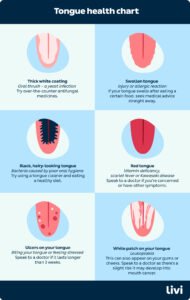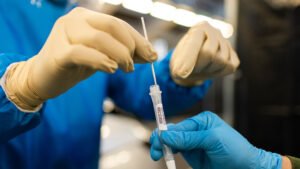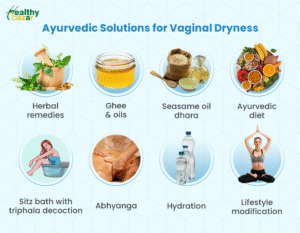Pacemaker Implantation Surgery_ Everything You Need to Know
Pacemaker Implantation Surgery: A Comprehensive Guide
Introduction to Pacemaker Implantation Surgery
Pacemaker implantation is a minimally invasive procedure where a small device is placed under the skin of the chest to regulate heartbeats. The device emits electrical pulses that stimulate the heart to maintain a normal rhythm. Depending on the condition being treated, the procedure may be performed on an outpatient or inpatient basis. This article provides an in-depth look at the pacemaker implantation surgery, including its purpose, risks, and recovery process.
What Is Pacemaker Surgery?
Pacemaker surgery is performed to implant a pacemaker, a device consisting of a pulse generator (containing a battery and circuitry) and one to three small leads. These leads are placed inside the heart chambers. The pacemaker sends electrical impulses to the heart to regulate its rhythm, ensuring it beats in sync. It is commonly used to treat arrhythmia (irregular heart rhythms) or after heart surgery to restore normal heart activity.
Types of Pacemakers
Pacemakers come in various types, each designed for specific heart rhythm disorders:
-
Single-Chamber Pacemakers: These devices deliver electrical impulses to one chamber of the heart, typically used for patients with atrial fibrillation and a slow heart rate.
-
Dual-Chamber Pacemakers: These pacemakers synchronize the contractions of the right atrium and right ventricle, ensuring proper timing of heartbeats.
-
Biventricular Pacemakers (Cardiac Resynchronization Therapy): These are used for patients with heart failure, helping both ventricles contract together for improved heart function.
-
Automatic Implantable Cardioverter-Defibrillators (AICDs): A combination of a pacemaker and defibrillator, AICDs deliver shocks to the heart if life-threatening arrhythmias like ventricular tachycardia or fibrillation occur.
Why Is a Pacemaker Needed?
Pacemakers are essential for treating conditions such as:
-
Arrhythmias: Including slow heart rates, abnormal heart rhythms, or electrical pathway blockages.
-
Congenital Heart Conditions: Pacemakers may be used in children born with heart defects that affect normal rhythm.
-
Heart Disease: Pacemakers help manage heart conditions that disrupt normal heart function, including after heart surgery or a heart attack.
Contraindications and Risks of Pacemaker Surgery
Although pacemaker surgery is generally safe, it may not be suitable for everyone. The decision to proceed depends on an evaluation of potential risks and benefits. Some conditions may contraindicate pacemaker implantation, particularly when a heart rhythm issue is not symptomatic or requires alternative treatments.
Common risks associated with pacemaker surgery include:
-
Electrode Dislodgment: The leads may become dislodged from the heart’s chambers.
-
Infection: Infection at the incision site or around the pacemaker.
-
Blood Clots: A blood clot may develop, increasing the risk of stroke or other complications.
-
Pneumothorax: A collapsed lung, which can occur if the pacemaker is placed too close to the lungs.
While complications are rare, with proper care, most patients recover well from the surgery.
Preparing for Pacemaker Surgery
Before the surgery, your cardiologist or surgeon will conduct several tests to assess your heart’s condition, such as:
-
Electrocardiogram (ECG): To monitor electrical activity in your heart.
-
Holter Monitor: A portable ECG to track your heart rhythms over 24-48 hours.
-
Echocardiogram: A test using sound waves to create images of your heart’s function.
These tests help determine whether you need a pacemaker and what type is most appropriate for your condition.
The Pacemaker Implantation Procedure
The procedure is usually performed under local anesthesia, with the patient awake but relaxed. The surgeon will make a small incision near the collarbone, and the pacemaker’s leads are threaded through a vein to the heart. Once positioned correctly, the leads are attached to the heart, and the device is placed under the skin. The procedure typically lasts a few hours, and patients are usually able to go home the same day.
Post-Surgery Recovery and Lifestyle Adjustments
Recovery from pacemaker implantation is generally quick, though you may need to follow some guidelines:
-
Activity Restrictions: Avoid heavy lifting or strenuous activity for several weeks.
-
Monitoring: Regular follow-up appointments with your cardiologist to monitor pacemaker function.
-
Device Checkups: Routine checks are needed to ensure the pacemaker is functioning properly.
With the pacemaker in place, most patients experience an improvement in their quality of life, with reduced symptoms like dizziness, fatigue, and fainting.
Frequently Asked Questions (FAQs)
-
What is the lifespan of a pacemaker battery? Pacemaker batteries typically last between 6 and 10 years, depending on usage and type of device.
-
Are there any long-term restrictions after pacemaker surgery? While the surgery doesn’t usually require long-term restrictions, it’s important to avoid certain activities that may damage the device or lead to complications.
-
Can I live a normal life with a pacemaker? Yes, most people can return to their normal daily activities after recovery, with improved heart rhythm control.
Conclusion
Pacemaker implantation surgery is a vital procedure that can significantly improve the quality of life for individuals with heart rhythm disorders. With advancements in technology, pacemakers are now more reliable and offer long-term solutions for managing heart conditions. If you have been diagnosed with a heart rhythm disorder, consult your healthcare provider to determine whether pacemaker implantation is right for you.









